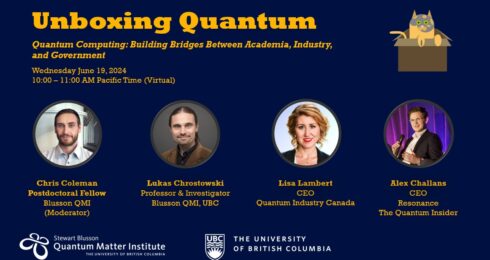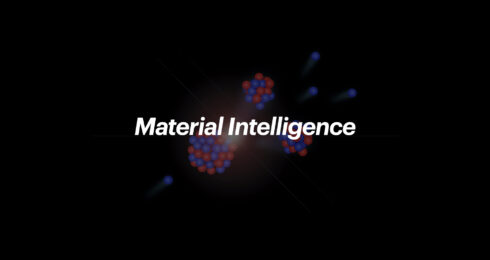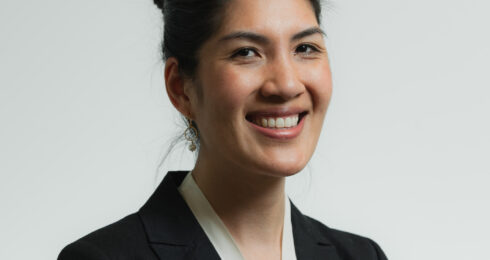Pictured: a graphic representation of the interaction between electrons in a copper oxide grid.
,
A multi-institutional, international collaboration that began at the Stewart Blusson Quantum Matter Institute (SBQMI) in 2014—and led by emerging leaders in condensed matter physics who were trained under the aegis of the Max Planck-UBC-UTokyo Centre for Quantum Materials (MPCQM)—has culminated in a novel interpretation of how electrons behave in solids. New research, published January 26 in Nature Communications, found electron behaviour in cuprates that defies Coulomb’s Law, which describes how charged particles (such as electrons or protons) attract or repel each other. In particular, Coulomb’s Law states that the greater the distance between two electrons, the weaker the repulsion between them.
,
Cuprates are materials that superconduct at temperatures one hundred times higher than other “conventional” materials (such as lead and aluminum), but their electronic properties are still largely unknown. This new research offers important insights as to the origins of charge density waves and superconductivity in cuprates (copper-based high-temperature superconductors, HTSCs). The results enrich researchers’ understanding of solid-state quantum materials and their emergent properties.
,
The team, including first author Fabio Boschini (former SBQMI postdoctoral fellow, PI: Andrea Damascelli), Alex Frano (former Max Planck Institute for Solid State Research graduate student and postdoctoral fellow, PI: Bernhard Keimer), and Eduardo H. da Silva Neto (former SBQMI & MPCQM postdoctoral fellow, PI: Andrea Damascelli), wondered whether Coulomb interaction inside HTSCs might be non-monotonic; that is, does a greater distance between two electrons necessarily result in a weaker interaction?
,
“A solid material is typically comprised of a grid-like arrangement of atoms, and electrons can “hop” between defined points within the grid. In cuprates, we found that electrons tend to arrange in circular patterns,” said Boschini, who was recently appointed an Affiliate Investigator at SBQMI; his primary appointment is Assistant Professor at Institut National de la Recherche Scientifique (INRS) in Quebec. “This is the signature of a non-monotonic interaction between electrons.”
,
Electron interactions play an instrumental role in defining the properties of cuprates, such as superconductivity and charge density waves. In particular, charge density waves are self-organized ripples of electrons.
,
“When two electrons are embedded in a solid, their interaction may become non-monotonic, favouring the emergence of charge density wave and superconductivity,” explained da Silva Neto, who recently took a faculty position at Yale University following an appointment at the University of California-Davis. “While charge density waves are usually oriented along the crystal axes, we found that for a brief period of time they can rotate into another direction and come back, creating new structures from which novel properties can emerge.”
,
“About a year and a half ago, we were working out how to conclude the project,” said Frano, currently an Assistant Professor at the University of California, San Diego. “Discussions with George Sawatzky and colleagues across multiple sites have been fundamental in the evolution of this work. People have come and gone and spread out, but the work continues.”
,
“It is so exciting to see how former students and postdoctoral fellows from the Max Planck-UBC-UTokyo Centre for Quantum Materials are now the rising stars leading ground-breaking international collaborations,” says Andrea Damascelli, Scientific Director of SBQMI and Co-Director of MPCQM.
,
The collaboration spanned two continents, three countries, and multiple research sites, including the Canada Light Source in Saskatoon, Advanced Light Source in Berkley, and BESSY (Berlin Electron Storage Ring Society for Synchrotron Radiation) in Berlin, as well as university partners across Canada, USA, and Germany.


